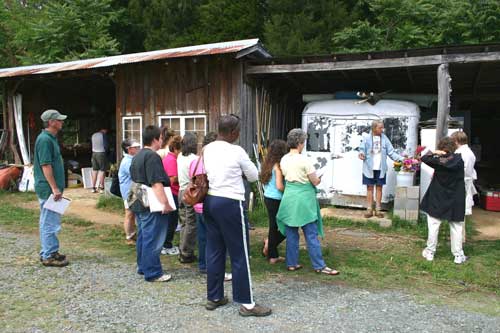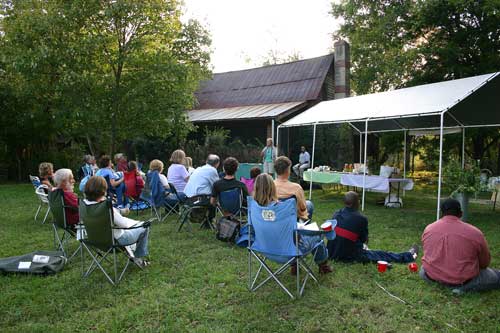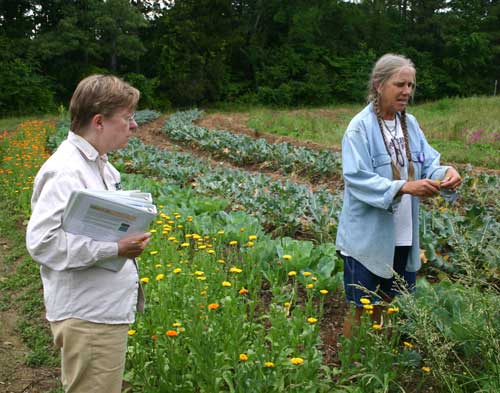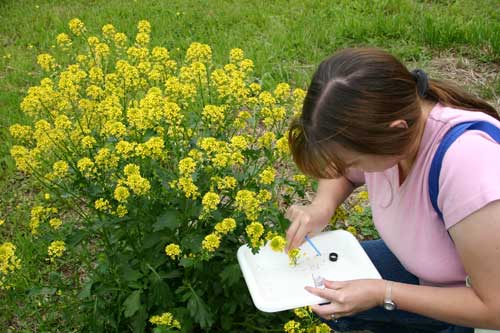Perry-Winkle Farm
go.ncsu.edu/readext?177753
en Español / em Português
El inglés es el idioma de control de esta página. En la medida en que haya algún conflicto entre la traducción al inglés y la traducción, el inglés prevalece.
Al hacer clic en el enlace de traducción se activa un servicio de traducción gratuito para convertir la página al español. Al igual que con cualquier traducción por Internet, la conversión no es sensible al contexto y puede que no traduzca el texto en su significado original. NC State Extension no garantiza la exactitud del texto traducido. Por favor, tenga en cuenta que algunas aplicaciones y/o servicios pueden no funcionar como se espera cuando se traducen.
Português
Inglês é o idioma de controle desta página. Na medida que haja algum conflito entre o texto original em Inglês e a tradução, o Inglês prevalece.
Ao clicar no link de tradução, um serviço gratuito de tradução será ativado para converter a página para o Português. Como em qualquer tradução pela internet, a conversão não é sensivel ao contexto e pode não ocorrer a tradução para o significado orginal. O serviço de Extensão da Carolina do Norte (NC State Extension) não garante a exatidão do texto traduzido. Por favor, observe que algumas funções ou serviços podem não funcionar como esperado após a tradução.
English
English is the controlling language of this page. To the extent there is any conflict between the English text and the translation, English controls.
Clicking on the translation link activates a free translation service to convert the page to Spanish. As with any Internet translation, the conversion is not context-sensitive and may not translate the text to its original meaning. NC State Extension does not guarantee the accuracy of the translated text. Please note that some applications and/or services may not function as expected when translated.
Collapse ▲|
Photos and text by Debbie Roos, Agricultural Extension Agent.
On-farm Research and Education
|

|
Perry-winkle Farm has collaborated with Cooperative Extension on on-farm research projects as well as a cut flower farmer mentoring program. Here Cathy explains the importance of postharvest handling to a group of cut flower growers in front of a refrigerated truck body which serves as the farm’s walk-in cooler.
|

|
Cathy talks with growers about cut flower production at a field day and farm tour.
|

|
Perry-winkle Farm often participates in farm tours, hosting various groups of both farmers and non-farmers who are interested in learning more about local agriculture.
|

|
Cathy explains to the cut flower mentoring program participants howCalendula flower petals are removed and mixed with salad greens as part of a premium salad mix. Local grower Judy Lessler gets a up-close view.
|

|
Cathy demonstrates the proper stage of development for harvesting sunflowers for the cut flower mentoring program participants. The class met for three hours every other week during the summer of 2006 and often ended with a walk through the fields.
|

|
The cut flower mentoring program participants talk about harvestingGomphrena and other cuts.
|

|
Faculty from North Carolina State University often enlist Extension to help in finding farms willing to host researchers. Perry-winkle is always a popular stop. These yellow sticky traps were placed around the farm to monitor thrips, a tiny sucking insect that damages flowers and vegetables.
|

|
This researcher samples thrips from a weed growing on the farm. She was interested in learning which species were present on the farm.
|

|
Perry-winkle Farm collaborated with the Chatham County Extension Center on two on-farm research projects. The first project evaluated the efficacy of using parasitic Pediobius wasps to control the Mexican bean beetle, a major pest of snap beans. The wasps are purchased through the mail and arrive in a vial of “mummies”, bean beetle larvae that have been parasitized. A couple of days after arrival, the wasps complete their metamorphosis from pupa to adult and hatch from the mummies. Here Cathy releases the newly-emerged wasps in the bean field. The wasps are so tiny they are barely visible with the naked eye! The white “cages” shown above are the control plots where row covers were used to exclude wasps from beans. Another on-farm research plot evaluated the use of cut flowers as beneficial insect habitat for Trichogramma and braconid wasps, parasitoids of tomato fruitworm and tomato hornworm. |

|
Veterinary students from North Carolina State University make regular trips to Perry-winkle Farm to learn about pasture-based poultry systems.
|
|
Page 9
|
This page last updated October 24, 2006.


